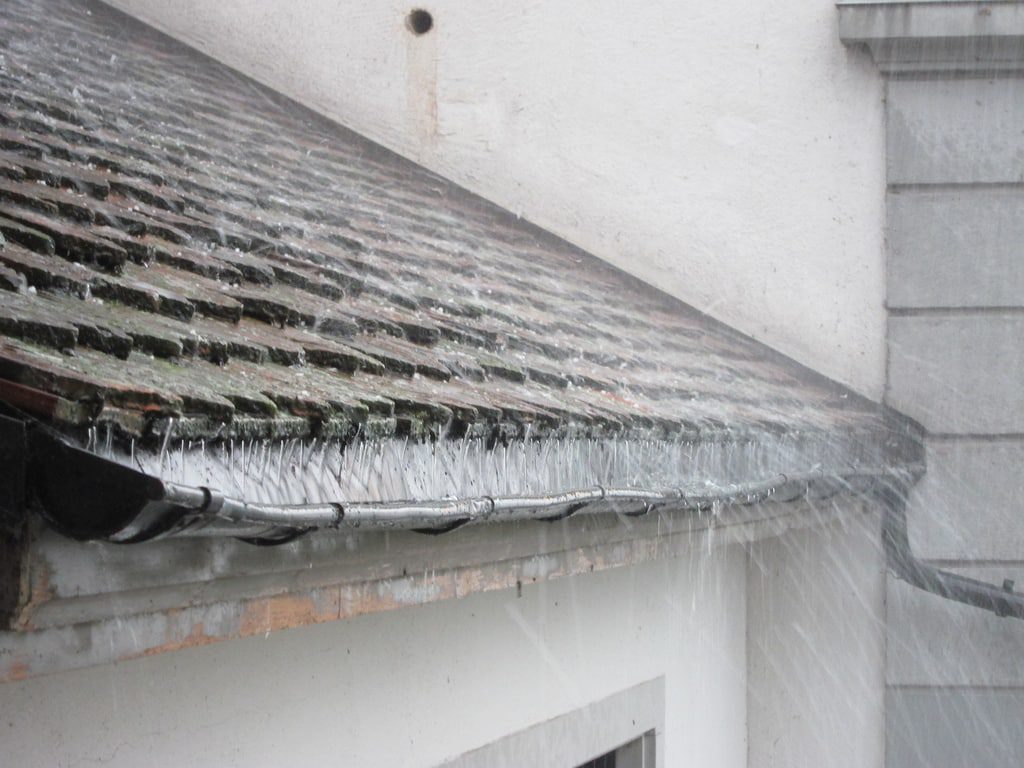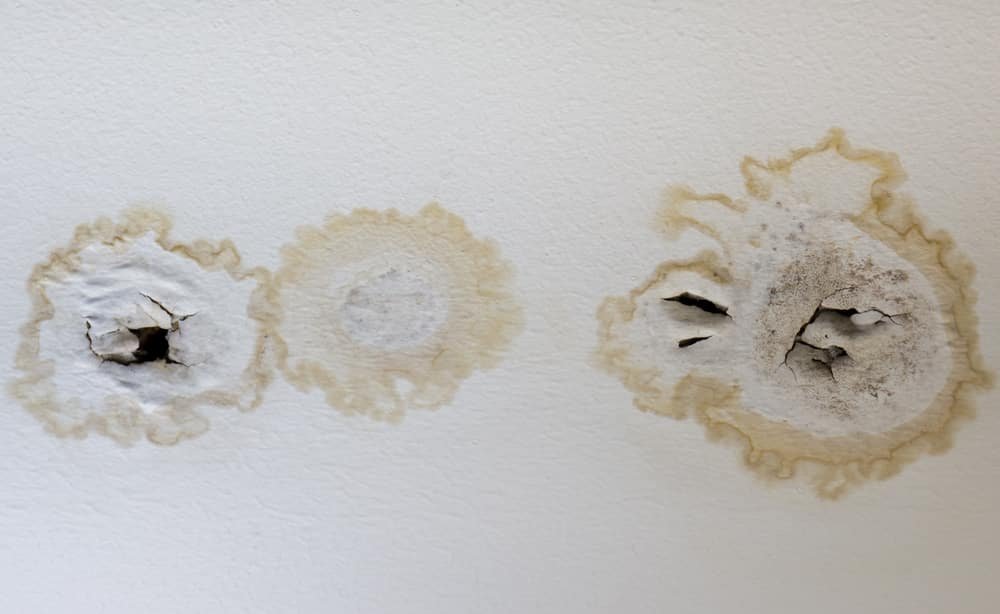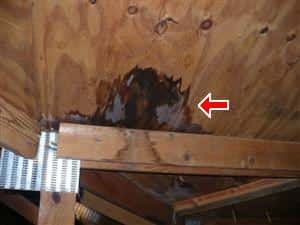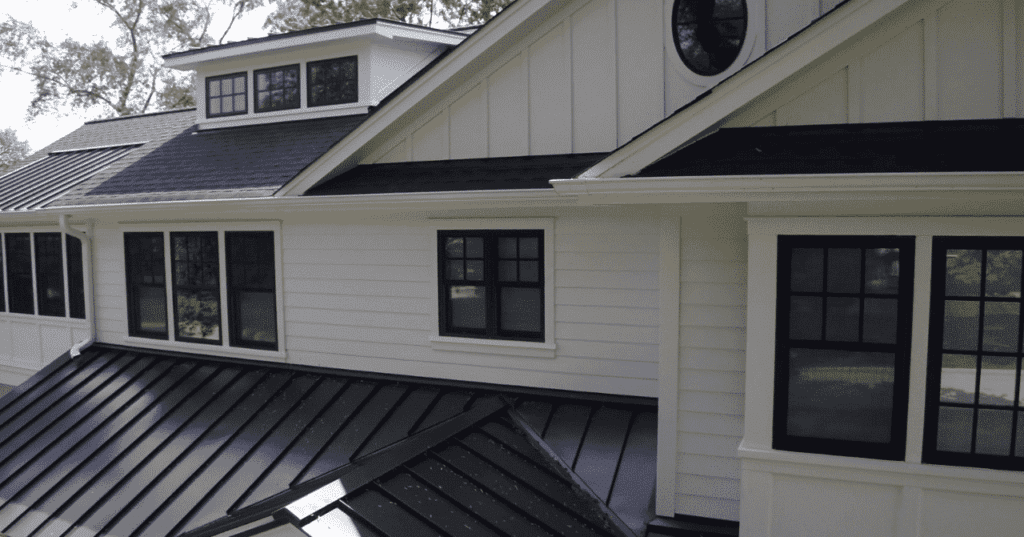Discovering a roof leak can be a homeowner’s worst nightmare. It’s a problem that often remains hidden until it escalates into a major issue, causing significant water damage to your home. One of the most susceptible areas for these accidents is your attic, a space that often goes unattended. In this article, we’ll delve into recognizing the signs of a roof leak in your attic, the root causes of roof leaks, the potential risks of ignoring them, and how to take preventive measures.
Attics are one of the spaces in your home that are most vulnerable to leaks. Unfortunately, as a space that homeowners don’t often spend time in, this problem can go undetected for months on end, causing serious water damage.

If you’re looking to learn what the signs of a roof leak are, how often you should check for a roof leak, and ways to protect your home against it, we’ve got you covered! We’ve done all the research to help keep your home protected from leaks and water damage. Read on to find out what the signs of a roof leak in your attic are.
Why Is My Roof Leaking?
The perplexing question that many homeowners face is why their roof is leaking in the first place. A roof with a leaky ceiling is often an ominous sign, indicating underlying issues with the structural integrity of the roof itself. For example, if you notice water stains on your ceiling after heavy rain, it’s essential to recognize that it’s not just a minor inconvenience. It’s a call to action! Taking timely measures to address the issue is crucial in preventing more extensive and costly water damage in the future.
Moreover, seeking professional assistance to inspect your roof can help you identify the root cause of the issue, whether it’s due to damaged shingles, poor insulation, or clogged gutters. This proactive approach ensures that your roof is not only free from leaks but also in excellent long-term condition.
You may find it interesting: 5 ways winter damages your roof
Dangers of Roof Leaks
A leaky roof may not look that serious at first glance, but it can lead to serious problems if left untreated. For instance, prolonged exposure to a leaking roof can result in extensive water damage, eventually compromising the structural integrity of your roof. This can manifest in various ways, such as weakened support beams or sagging ceilings.


Mold thrives in moist environments. When moisture buildup occurs because of a leaking roof, mold growth often occurs. While many types of mold are harmless, mold is never a good sign in your home. For example, if you neglect to address this problem promptly, you might find unsightly mold patches on your attic’s wooden beams or insulation, potentially affecting the indoor air quality and your family’s health. It’s essential to recognize the potential hazards of mold growth when dealing with a leaking roof.
Unforeseen Consequences of Roof Leaks
While we have previously highlighted the more dramatic and evident consequences of a leaking roof, there is a myriad of subtler issues that can emerge due to a compromised roof, including a reduction in your home’s thermal efficiency.
Many types of roof-insulating materials are susceptible to moisture and can lose some or all of their insulation properties when in contact with water. The moisture itself can have a minimal impact on the insulation, but it can encourage the growth of mold and fungal organisms, which can weaken the barrier.
The natural tendency of heat to ascend is to elevate, thus rendering the importance of roof insulation paramount. If your roof doesn’t have good insulation, your house will lose a lot of heat up there, which can cause more energy loss and more expensive heating. Regrettably, roof insulation serves as a direct barrier against water penetration through the roof and infiltrating your living space.
Spotting a Roof Leak’s Presence
It’s important to recognize the early signs of a leaking roof and take action as soon as they happen. Issues like this can persist for prolonged periods before exhibiting distinct indicators. If you’re lucky enough to find them early, you can save money and frustration by fixing the problem at its earliest stages. There exist several indicators that warrant your attention:
The presence of water on the ceiling is the most obvious sign of a roof leak. These droplets may even form visible wet patches on the ceiling surface due to surface tension.
Crucial to understand that this only applies to the highest ceiling in your house. If one is residing in a multi-story residence and observes a leakage on the first-floor ceiling without any corresponding leakage on the upper floor, it suggests a potential issue between the floors, such as a ruptured water pipe.

On Upper Walls – Dampness on the upper portions of walls that meet the highest ceiling can also be a sign of this problem. It’s a good idea to look into this area when there aren’t any other obvious reasons.
Ceilings that are sagging without clear water signs are rare, but it’s possible. If you notice sagging in certain areas of your ceiling, it could be a sign that water is pulling on the other side.
Despite the absence of any apparent indications of a leakage within your dwelling, the sight of missing roofing tiles, shingles, or damaged roof panels should imply the possibility of this issue, pending verification of the same.
Verifying a Roof Leak
If you suspect a roof leak, the next step is to confirm your suspicion. To ensure safety and avoid accidents, a close inspection should be conducted from the interior of your home. For most homes, this means venturing into the attic, and doing so necessitates caution.
If you’re in their structure, If your attic is covered and has lights, it’s easy to check. If your attic lacks insulation and illumination, it is imperative to carry a flashlight. Not only that, but it is also a necessity to have one on hand. The attic not only facilitates the examination of the underside of the roof but also ensures meticulous navigation.
There is a gap between the floor joists and the insulation. The space between these joists is not conducive for walking, as it may result in unintentional falls to the lower floors.
Start your examination after you have reached the attic and are safely balanced on the joists. The most evident indication of trouble is the presence of daylight passing through your roof. If light can infiltrate, water can as well. Look for signs of dampness and wet patches. They are usually more visible in the attic than in the lower living spaces.
However, not all roof issues are immediately visible. Therefore, conduct a comprehensive inspection. If you spot anything suspicious, like nesting birds or evidence of an animal invasion that couldn’t have happened through the house, it could point to a roof opening.
If you’ve recently had a roof inspection and discovered that it’s leaking, and you’re in need of a complete replacement, don’t hesitate to get in touch with Roof Services. We’re here to help you secure a dry and durable roof for your home. Contact us today to address your roofing needs and ensure a safe and comfortable living environment.
In Conclusion
A leaking roof is not an impossible challenge. A significant leak caused by a falling tree or a major incident may require extensive roof repairs, but more often, it results from issues like missing shingles or cracked tiles.
Residential roofs may not be entirely waterproof, however, the way tiles overlap on the roof’s downward slope prevents water from entering. If a tile is damaged or missing, it is the easiest way for water to get in, which leads to property damage.
The majority of issues can be handled, but it does require a climb up a mountain. It can be difficult for small buildings, but it can be risky for taller buildings.

Although the task itself may seem straightforward, it’s not something you should attempt if you’re not entirely comfortable on the roof and aren’t familiar with the necessary safety precautions. If you have more complicated problems like flashing leaks, it’s best to talk to a roofing expert. Certain roofing types, such as roof panels or lead roofing, may require the expertise of experts who specialize in that area.
Other roof features, such as chimneys and vents, are potential weak points that could allow water to infiltrate if not properly sealed. It is imperative to utilize the services of a qualified professional when addressing leaks in such areas.
Remember that a roof that is leaking should never be allowed, even if it doesn’t cause any problems. It may not have a significant impact on your daily life, but it may cause silent damage to your home that will worsen over time. Whether you decide to tackle it on your own or enlist the help of a professional, the important thing is to get on with it as soon as possible to protect your assets.
The Best Way to Stop Roof Leaks
Nervous about the state of your roof? Leave it to a roofing professional! Contact Roofing Services today to receive your estimate and ensure the safety of your home. Don’t wait until a small leak becomes a big problem. Protect your home from roof leaks today, and gain peace of mind knowing your roof is in expert hands.

